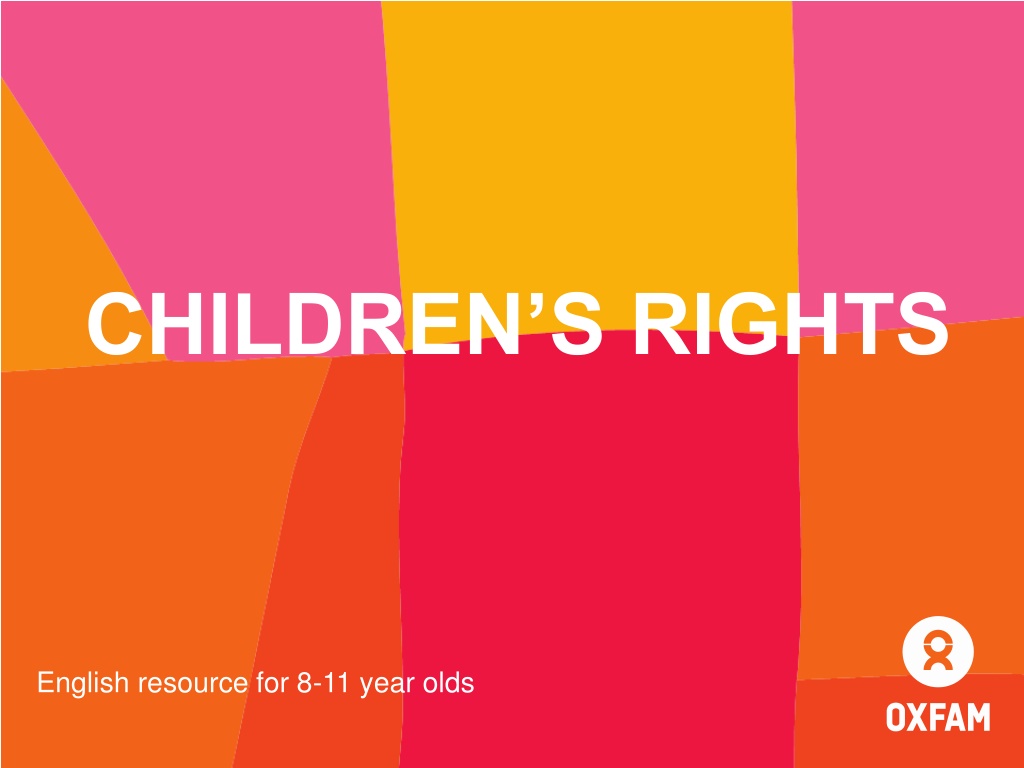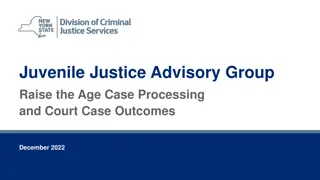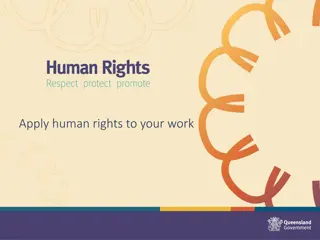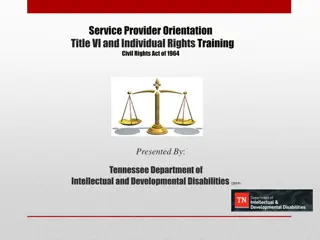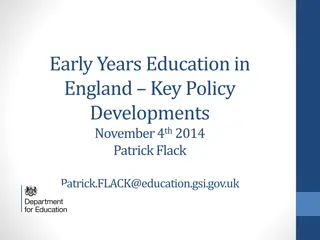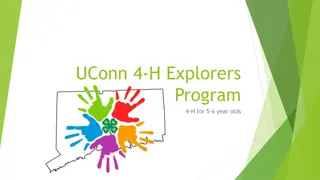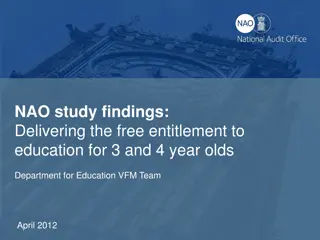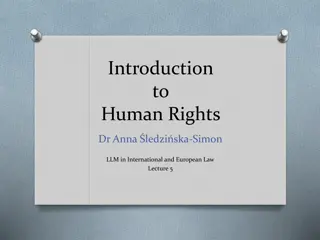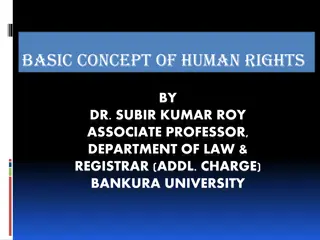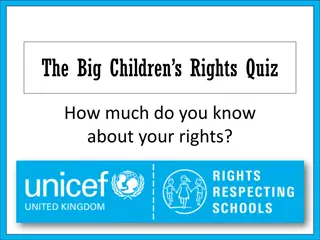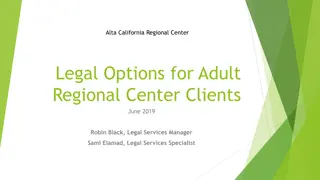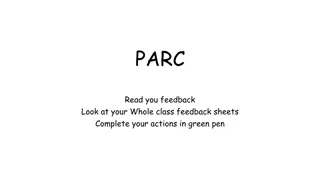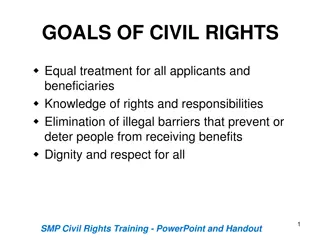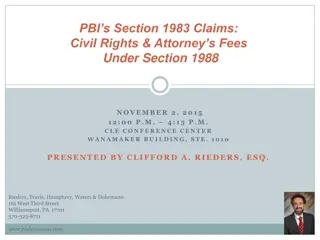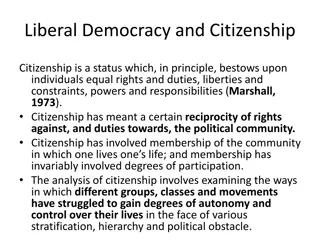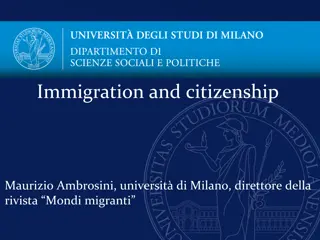Children's Rights Resource for 8-11 Year Olds
Explore children's rights through engaging sessions and selected articles from the UN Rights of the Child. Discover persuasive phrases, needs and wants, and rights of the child for kids aged 8-11. Delve into real-life examples from Syria and Uganda to understand and appreciate the importance of children's rights worldwide.
Download Presentation

Please find below an Image/Link to download the presentation.
The content on the website is provided AS IS for your information and personal use only. It may not be sold, licensed, or shared on other websites without obtaining consent from the author. Download presentation by click this link. If you encounter any issues during the download, it is possible that the publisher has removed the file from their server.
E N D
Presentation Transcript
CHILDRENS RIGHTS English resource for 8-11 year olds
CHILDRENS RIGHTS Session 1: Needs and wants English resource for 8-11 year olds
Persuasive phrases Now is the time to stand up for We are all united in our belief that... We strongly believe that We firmly believe that Surely you must agree that...
CHILDRENS RIGHTS Session 2: Rights of the child English resource for 8-11 year olds
Selected articles from the UN Rights of the Child Article 3: Adults should do what is best for you. Article 6: You have the right to be alive. Article 14: You have the right to think what you like and be whatever religion you want to be Article 15: You have the right to make friends. Article 17: You have the right to collect information from radios, newspapers, television, books etc., from all around the world. Article 19: No one should hurt you in any way. Article 24: You have a right to good health. Article 27: You have the right to food, clothes, and a place to live. Article 28: You have a right to education. Article 30: You have the right to enjoy your own culture, practise your own religion and use your own language. Article 31: You have the right to play. Article 37: You should not be put in prison.
Persuasive phrases Now is the time to stand up for We are all united in our belief that... We strongly believe that We firmly believe that Surely you must agree that...
CHILDRENS RIGHTS Session 3: Exploring rights Children s Rights
Exploring childrens rights in Syria and Uganda
Bugala Island, Uganda Photo credit: Simisa, Wikimedia Commons
CHILDRENS RIGHTS Session 4: Right to good health water and sanitation Children s Rights
Right to good health: water and sanitation in Sierra Leone
Freetown, Sierra Leone Positive image of SL
UN Convention on the Rights of the Child Article 24: You have the right to good health
A water source is a place from which people collect water for drinking, cooking or washing. This woman is pumping water up from below the ground.
CHALLENGE 1 There are no pipes to transport human waste away so instead it runs into the streets and makes any nearby water sources dirty. Which photo shows evidence of this challenge?
There are no pipes to transport human waste away so instead it runs into the streets and makes any nearby water sources dirty.
CHALLENGE 2 Toilets are built too close to water sources so waste directly pollutes the water. This leads to diseases like cholera when people drink or wash in it. Which photo shows evidence of this challenge?
Toilets are built too close to water sources so waste directly pollutes the water. This leads to diseases like cholera when people drink or wash in it.
CHALLENGE 3 Wells are not always covered over, so animals are free to defecate in the water. Which photo shows evidence of this challenge?
Wells are not always covered over, so animals are free to defecate in the water.
CHALLENGE 4 Wells are not very deep and each well is used by too many people so they run dry. Which photo shows evidence of this challenge?
Wells are not very deep and each well is used by too many people so they run dry.
CHALLENGE 5 Well water is not safe to drink because wells are not dug very deep. This means that water gets contaminated by animals drinking and defecating in it or by humans if there is rubbish, open defecation or a toilet close by. Which photo shows evidence of this challenge?
Well water is not safe to drink because wells are not dug very deep. This means that water gets contaminated by animals drinking and defecating in it or by humans if there is rubbish, open defecation or a toilet close by.
Pamaronko Community Primary School
Hand washing It s my responsibility to tell people about how to prevent sicknesses by washing their hands, drinking safe water and other good hygiene.
CAN YOU USE THIS EMOTIVE LANGUAGE TO DESCRIBE THE BENEFITS OF THE NEW PIT LATRINES AND WATER PUMP? magnificent exciting wonderful marvellous superb unique thrilling
CHILDRENS RIGHTS Session 6: The health club Children s Rights
Hand washing song https://vimeo.com/130732781
Hand washing demonstration https://vimeo.com/130733058
